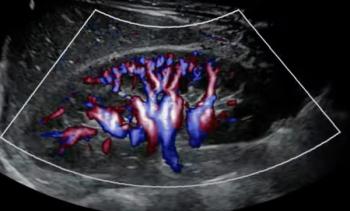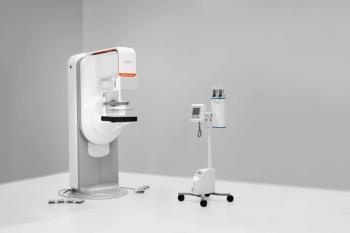
- Diagnostic Imaging Vol 30 No 12
- Volume 30
- Issue 12
Philips' Brilliance iCT boosts quality with new technology
Volume-rendered image processed from data acquired using the Philips 256-slice Brilliance iCT scanner at WellStar Kennestone Hospital in Marietta, GA, shows right iliac artery stenosis and multiple calcifications on left iliac artery. Bony landmarks are ghosted in background, the result of a new visualization technique introduced by Philips to assist in planning interventions. The Marietta installation boosts the number of Philips 256-slice CTs to nine. These sites, located at medical facilities around the world, have scanned more than 6000 patients, according to Philips Healthcare. With rotational speeds up to 0.27 seconds and a detector that spans 8 cm, the iCT supports applications in trauma, cardiac, interventional, pediatric, vascular, and bariatrics, as well as general imaging. Slotted anode and dual-support spiral groove bearing built into the scanner's x-ray tube enable 120- kW imaging and focal spot integrity at high rotational speeds. 'Smart' focal spot simultaneously deflects x-ray beam in x- and z-axes to acquire double the data during each rotation. (Provided by Philips)
Articles in this issue
about 17 years ago
Freestyle healthcare enters the marketplaceabout 17 years ago
Expert brings insights, history, strong opinions to NSF controversyabout 17 years ago
Remaking the gradeabout 17 years ago
Environment aims to enrichinterdepartmental teamworkabout 17 years ago
Know medical necessity,get it right from the startabout 17 years ago
CT angiography helps planendovascular aneurysm repairabout 17 years ago
Solid pseudopapillary neoplasm of the pancreas (Hamoudi tumor)about 17 years ago
European hospitals cope with Mo-99 supply crisisabout 17 years ago
Are the changes beneficial or even needed?about 17 years ago
Ultrasound unveils sourceof stump pain in amputeesNewsletter
Stay at the forefront of radiology with the Diagnostic Imaging newsletter, delivering the latest news, clinical insights, and imaging advancements for today’s radiologists.




























